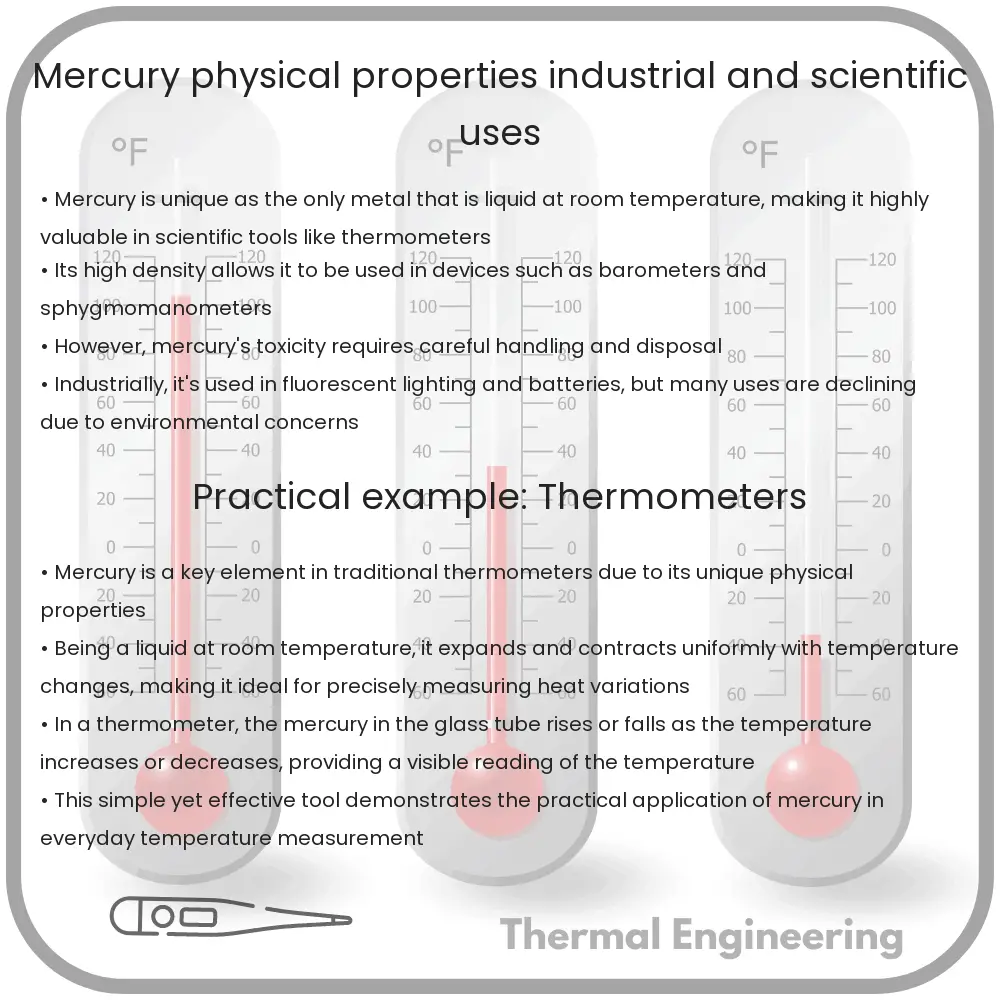Explore the unique properties, industrial applications, and environmental concerns of mercury (Hg), a metallic element that remains liquid at room temperature.

Physical Properties of Mercury
Mercury, also known by its chemical symbol Hg (from the Latin name hydrargyrum meaning “liquid silver”), is a fascinating element with unique physical properties. It is the only metallic element that is liquid at standard temperature and pressure, with a melting point of -38.83°C (-37.89°F) and a boiling point of 356.7°C (673.9°F). Mercury has a high surface tension, which allows it to form rounded beads on surfaces. It also has a high density, about 13.5 times that of water, which means it is very heavy.
Industrial Uses of Mercury
- Manufacture of Industrial Chemicals: Mercury is used as a catalyst in the production of certain chemicals, such as vinyl chloride and chloralkali products.
- Electrical and Electronic Applications: Due to its conductive properties, mercury is utilized in electrical switches and rectifiers. It is also used in batteries, particularly mercury cells.
- Dental Amalgams: Mercury has historically been used in dentistry for amalgam fillings due to its ability to form alloys with other metals.
- Measurement Instruments: Mercury is a key component in many traditional measuring instruments such as thermometers, barometers, and manometers, due to its thermal expansion properties.
Scientific Uses of Mercury
- Research in Physics: The unique properties of mercury make it valuable in scientific research, including experiments involving high-density fluids and high-pressure physics.
- Astronomy: Mercury’s reflective surface has been useful in calibrating astronomical instruments.
- Radio Isotope Production: Mercury isotopes are used in the production of radioisotopes for medical and industrial applications.
Environmental and Health Concerns
Mercury’s use comes with significant environmental and health risks. It is toxic to humans, affecting the nervous system, immune system, and kidneys. Mercury exposure can occur through inhalation of vapors, ingestion of contaminated food or water, or dermal contact with the substance. Due to these serious health impacts, its use has been increasingly regulated and phased out in several applications, such as thermometers and dental amalgams, in favor of safer alternatives.
Conclusion
While mercury has various industrial and scientific uses, responsible handling and awareness of its potential hazards are crucial. Its unique characteristics continue to make it a subject of interest in scientific research, although its use is constrained by necessary safety precautions to protect both human health and the environment.